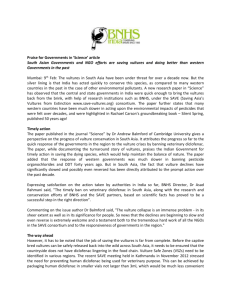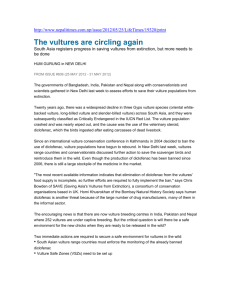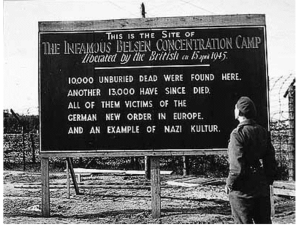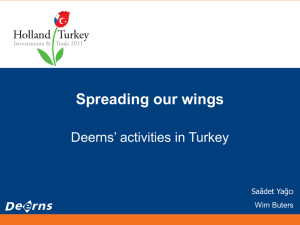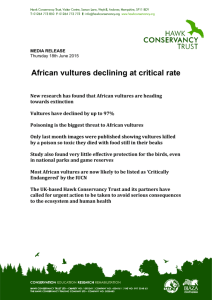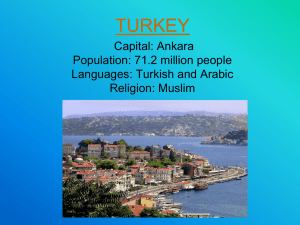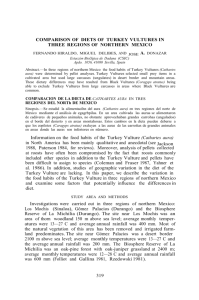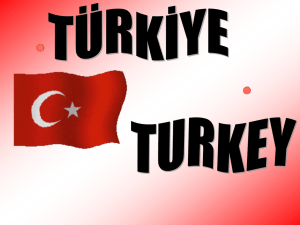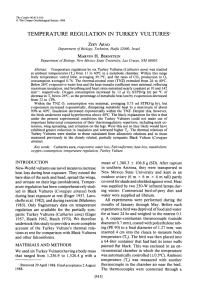Turkey Vulture
advertisement
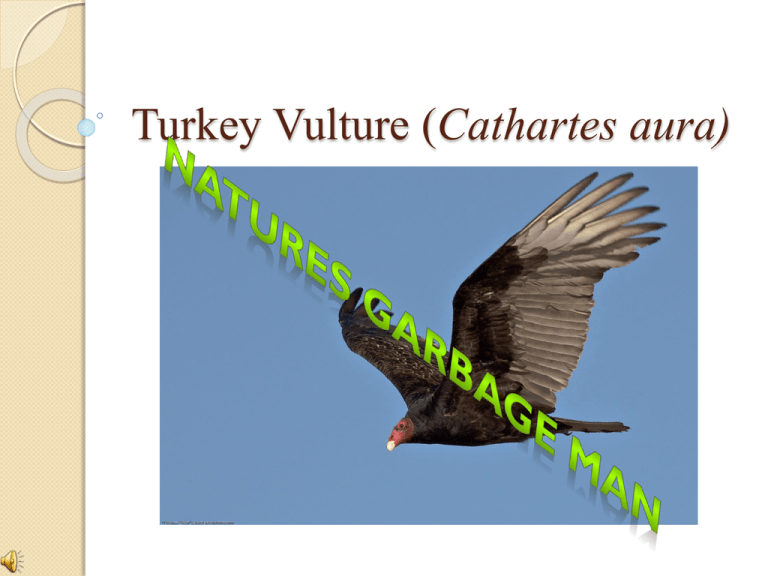
Turkey Vulture (Cathartes aura) a. Habitat and Size Turkey Vultures can be found year round in Kentucky They nest in highly secluded areas on rock or in trees They can often be seen along roadsides and landfill Most Turkey Vultures are 25 – 32 inches long with a wing span of 6 feet b. Raising Young Turkey Vultures raise 1-3 babies a year Both parents share in the incubating process Incubation last 38-41 days c. Food Turkey Vultures live primarily on carrion – dead or putrefying flesh Turkey Vultures find their food by their excellent sense of smell They prefer freshly dead animals and have excellent immune systems Many Turkey Vultures surround carrion at one time, but only one vulture eats at a time Turkey Vultures rarely attack live prey d. Cool Facts The part of the vultures brain for processing smell is larger compared to other birds Not all see vultures as creepy – many see them as scared for their clean up role Bald Head: is a matter of hygiene, the Turkey Vulture must stick its head inside of the carcass it is eating. With a feathery head bacteria and pieces of the carcass would stick to the bird’s head e. Voice Do not have voice boxes – they can only hiss and grunt Hisses are heard when they feel threatened and grunts occur when young are hungry or with adults during mating season Turkey Vultures gentle and non-aggressive f. Self Defense Turkey Vultures have few natural predators When threaten Turkey Vultures throw up Some believe the vultures do this to lighten their weight for an escape flight Others say vultures do this because often times the predator with eat the regurgitated meat instead of attacking the bird Turkey Vulture’s urine contains high levels of acid, they will often urinate on their legs to kill bacteria g. Flight Turkey Vultures fly with their wings in a shallow V shape Vultures can soar for hours without flapping their wings – flapping is usually seen before take off and during landing It is widely thought that vultures circle because of the presents of a future meal However, vulture circle in order to gain altitude on pockets of raising warm air h. Protection The Turkey Vulture is protected under the Migratory Bird Treaty Act of 1918 – it is illegal to kill them in the U.S. i. Why are these birds protected? Turkey Vultures numbers declined in the 1950s and 1960s, most likely due to contact with pesticides Vultures play a valuable role in nature Vultures quickly remove dead carcasses from nature, preventing the spread of disease Keeping us all safe This is why Turkey Vultures are considered to be nature’s garbage man! Click Here to See an Educational Video regarding Turkey Vultures from Raptor Rehab Sources "Animal Fact Sheets." Turkey Vulture Fact Sheet. Web. 12 Apr. 2012. <http://www.zoo.org/animalfacts/turkeyvulture>. Denapple1. "RR2 12." YouTube. YouTube, 05 Oct. 2010. Web. 12 Apr. 2012. <http://www.youtube.com/watch?v=3G0g9Y6n0yk>. "Turkey Vulture - Birding Identifications." Web. 12 Apr. 2012. <http://www.houghtonmifflinbooks.com/peterson/resources/identifications/tuvu/index.shtml>. "Turkey Vulture." Home. Web. 12 Apr. 2012. <http://www.peregrinefund.org/subsites/explore-raptors2001/vultures/turkevul.html>. "Turkey Vulture." National Geographic. Web. 12 Apr. 2012. <http://animals.nationalgeographic.com/animals/birding/turkey-vulture/>. "Turkey Vulture." Patuxent-Migratory Bird Research. Web. 12 Apr. 2012. <http://www.mbrpwrc.usgs.gov/id/framlst/i3250id.html>. "The Turkey Vulture Society." The Turkey Vulture Society. Web. 12 Apr. 2012. <http://vulturesociety.homestead.com/index.html>.
